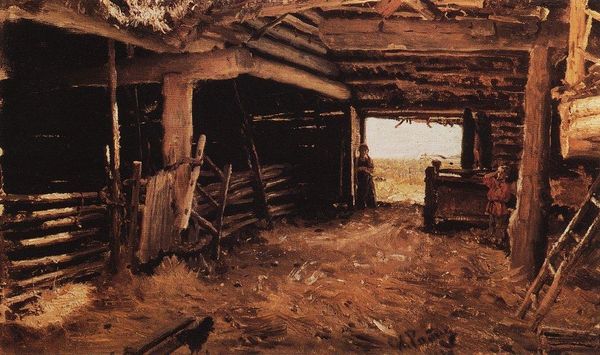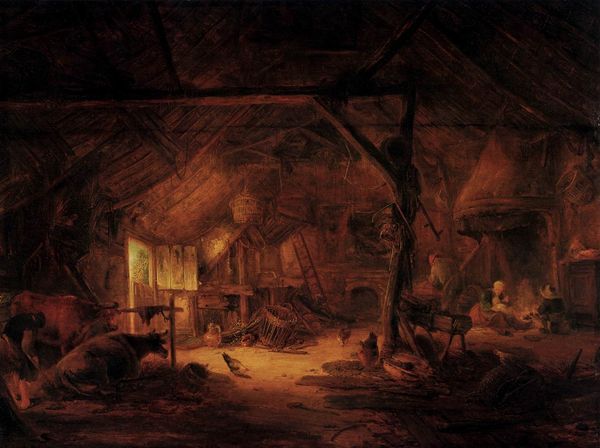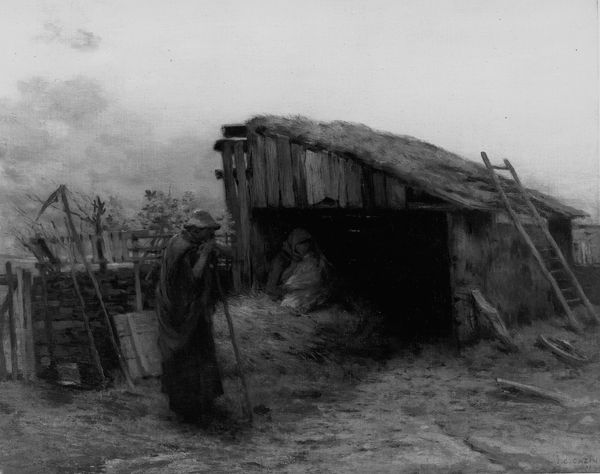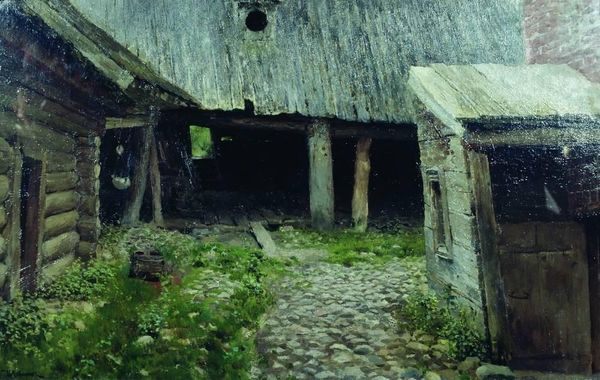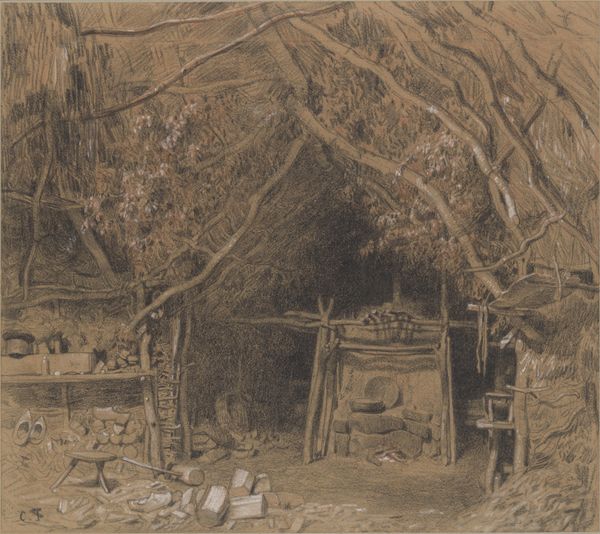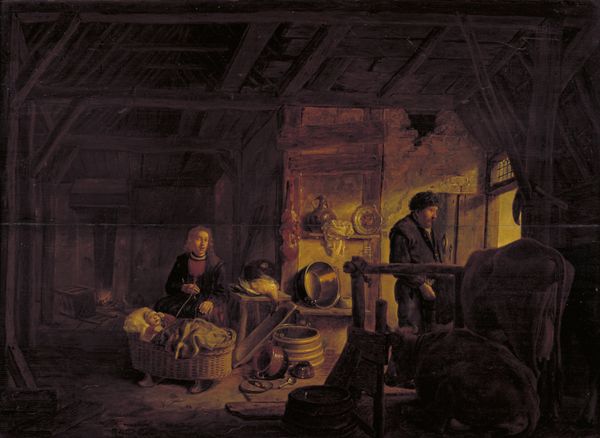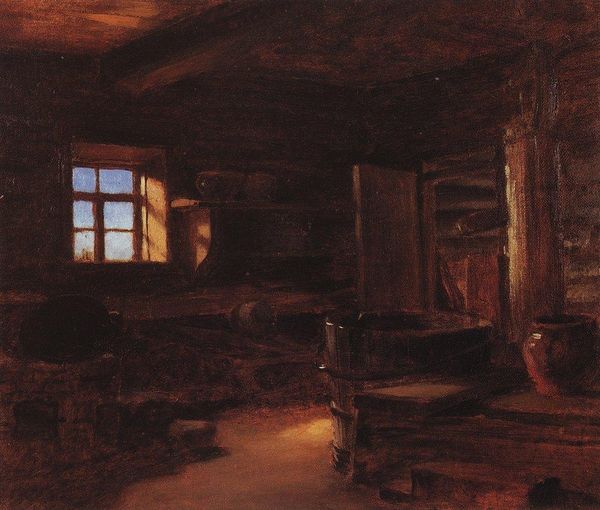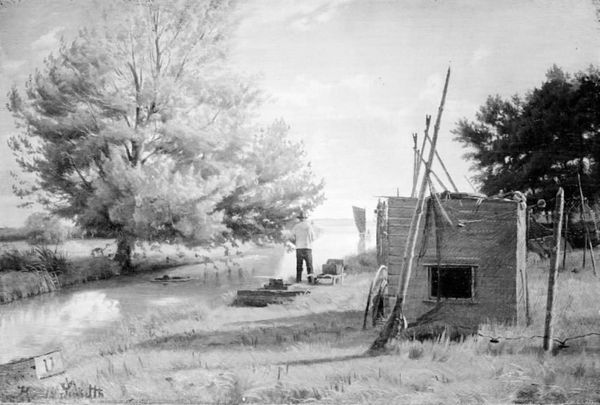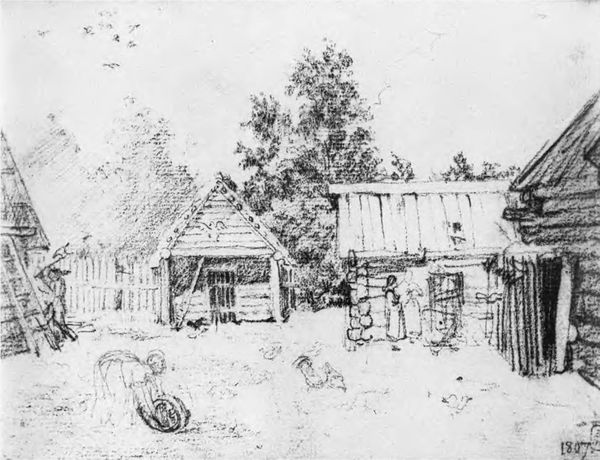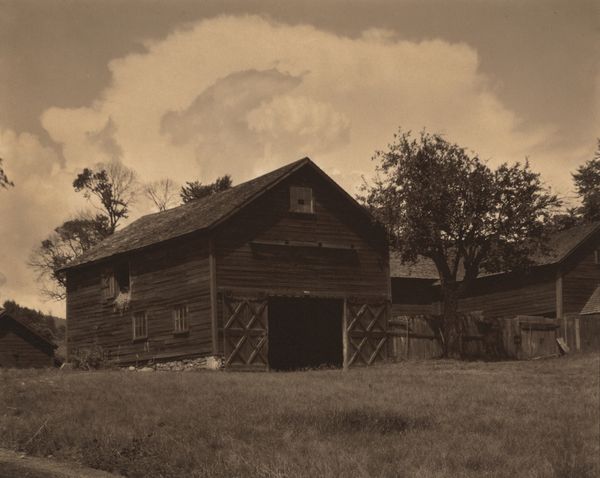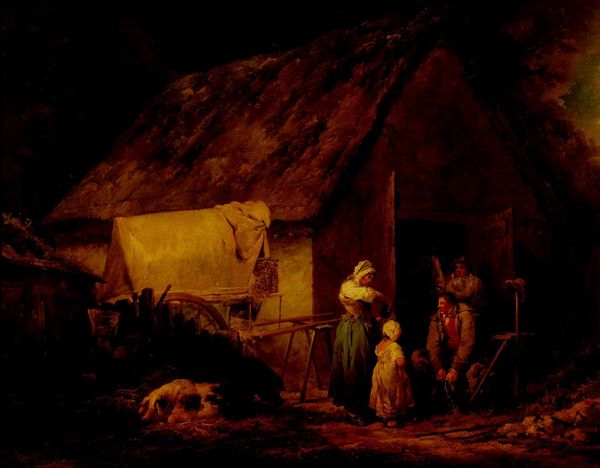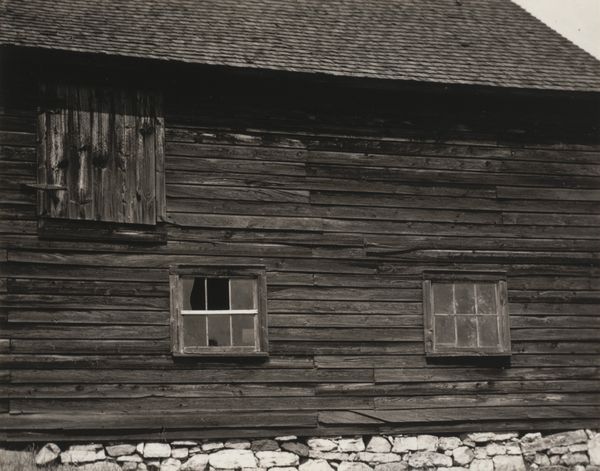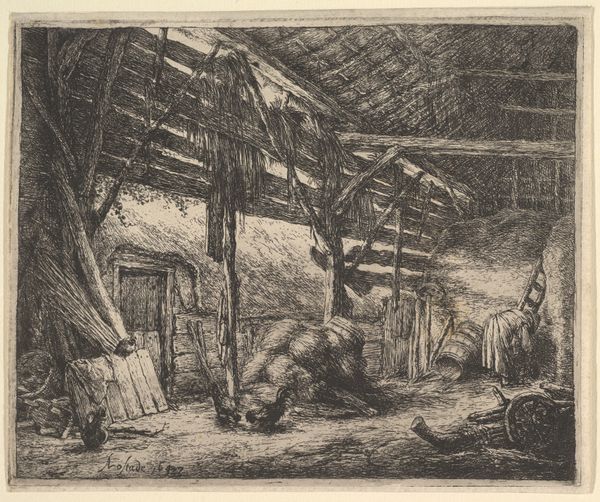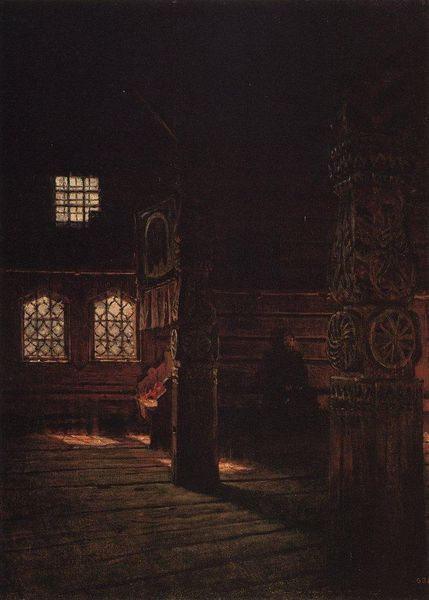
Copyright: Public domain
Editor: Here we have Vasily Vereshchagin's "Before the Confession at the Entrance to a Village Church" from 1888, created with oil paint. It has such a stark and solemn mood, especially with the muted colors and visible brushstrokes. How do you interpret this work in terms of its historical context? Curator: The dim lighting and the rustic architecture immediately tell us something about the setting. What social class do you imagine these people belong to, and how might their environment inform their spirituality? Think about the role of the church in rural Russian society at this time. Editor: They seem like peasants, perhaps? I guess the church would've been a major part of their community and culture. Curator: Exactly. Vereshchagin often used his art to critique social issues. Considering the title, "Before the Confession," and the expressions of the figures, how might the painting be a commentary on the relationship between the peasantry, the Church, and perhaps even the Tsarist regime? Editor: So, is it maybe showing that religion and the church are giving solace, or maybe they are even exploiting these people? Curator: That’s it exactly! Look at where they are positioned inside the wooden shack compared to the church far in the background, as if a visual reminder of what they have access to. By understanding the sociopolitical context of 19th-century Russia, Vereshchagin’s choices reveal not just an intimate moment, but a broader critique of institutional power. It urges us to consider art as both a product and producer of history. Editor: I see it now. The setting, and what's missing in it, becomes central to the story and Vereshchagin's commentary. Thanks for providing that context! Curator: My pleasure. It shows the power of understanding context in reading a seemingly simple genre scene.
Comments
No comments
Be the first to comment and join the conversation on the ultimate creative platform.
